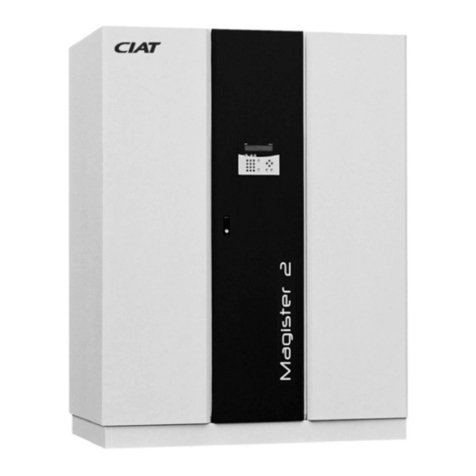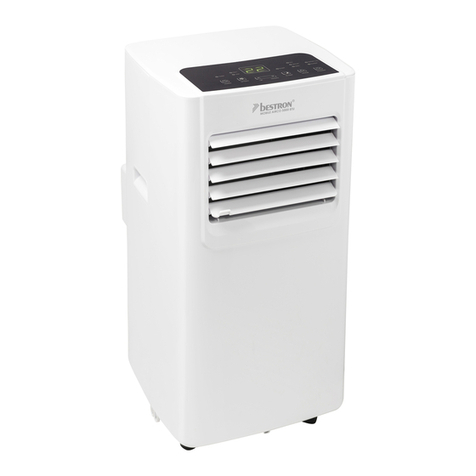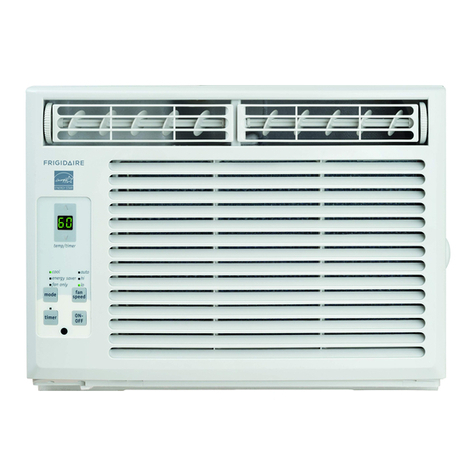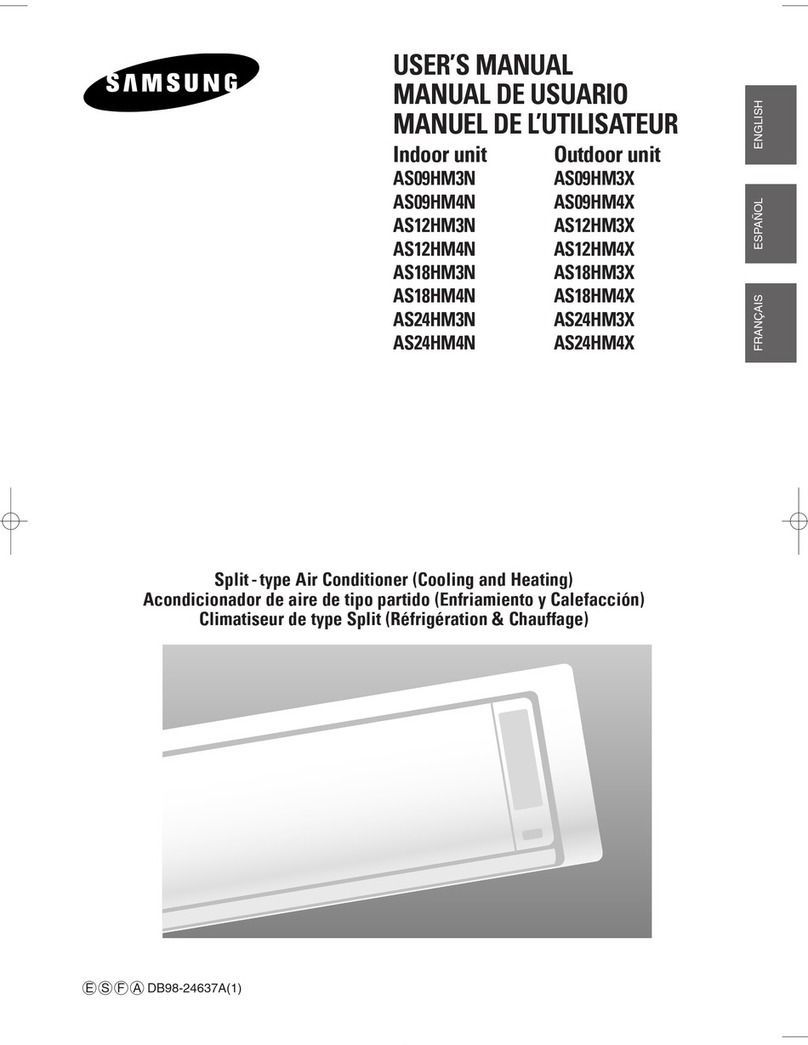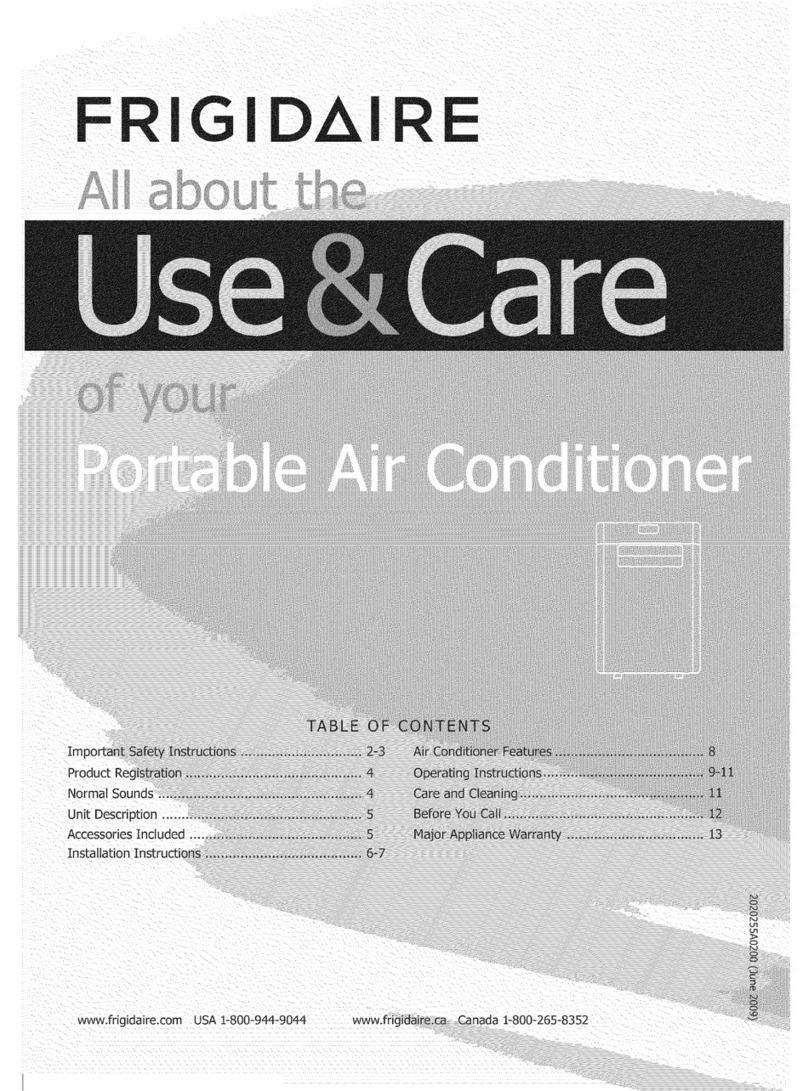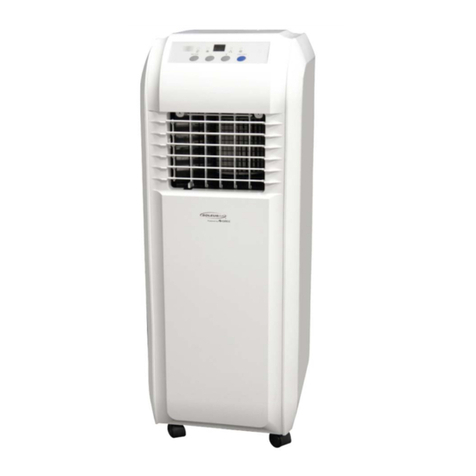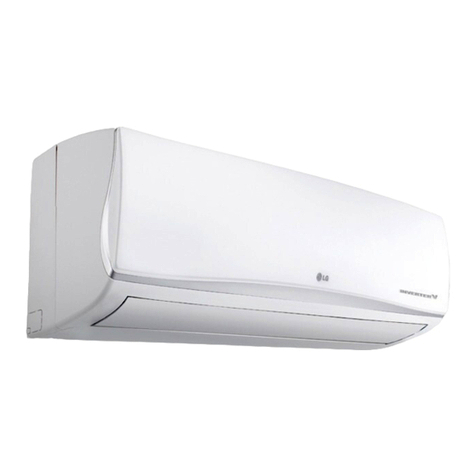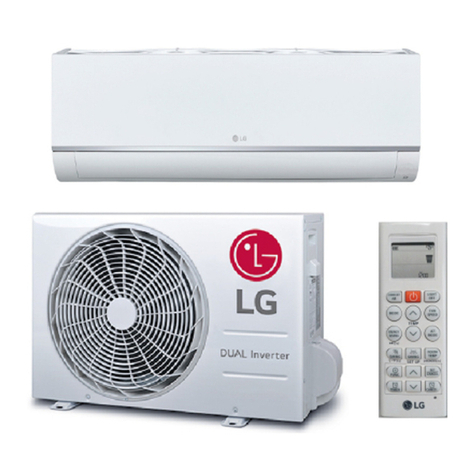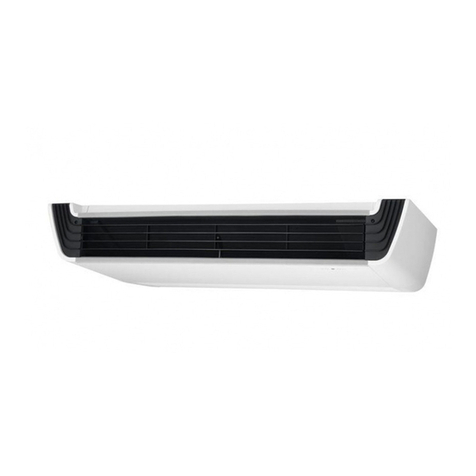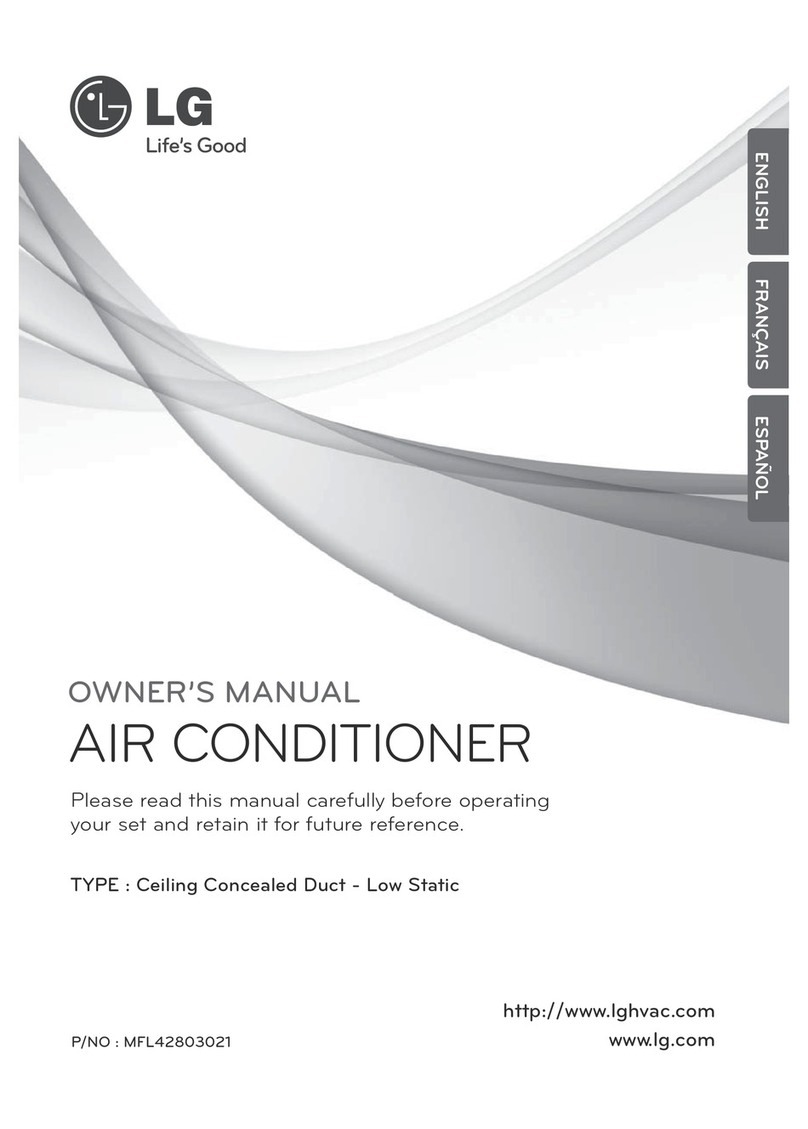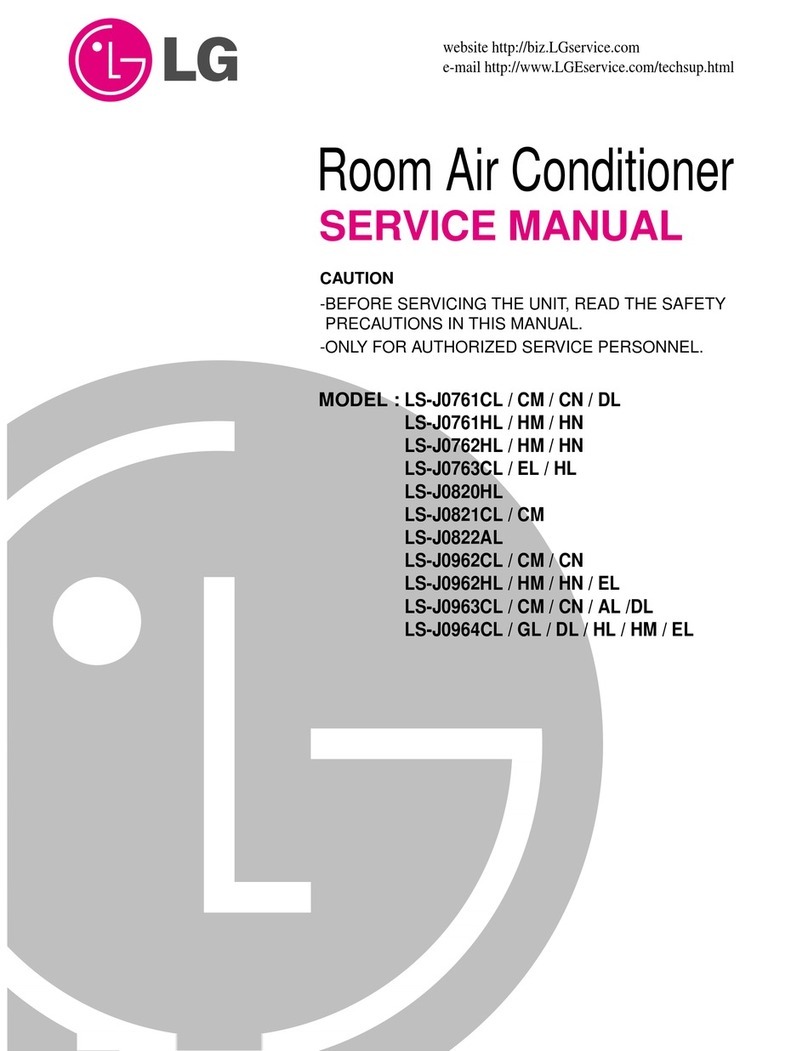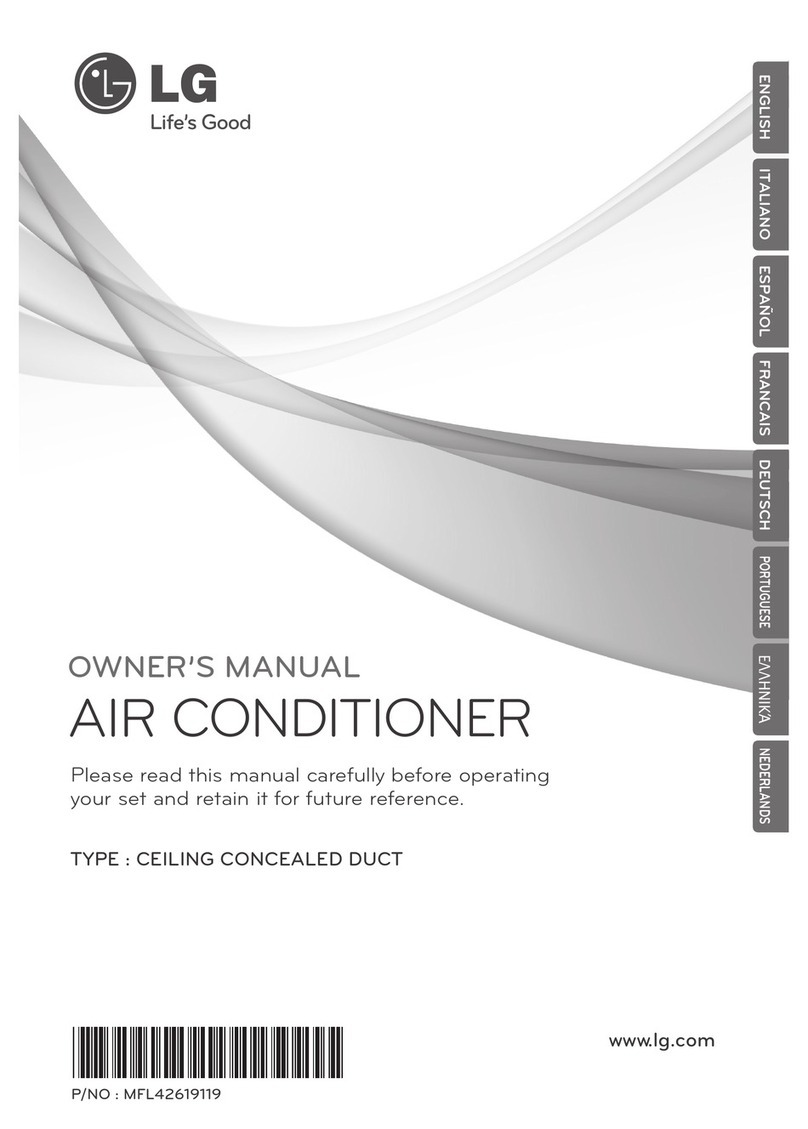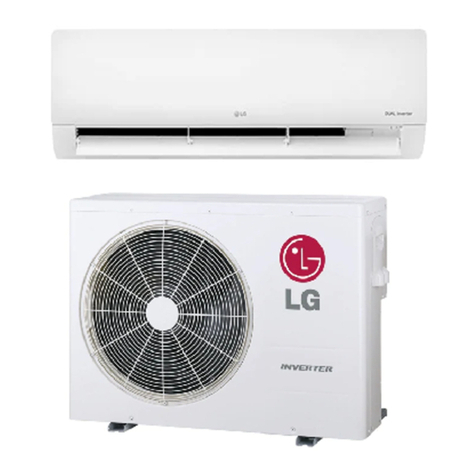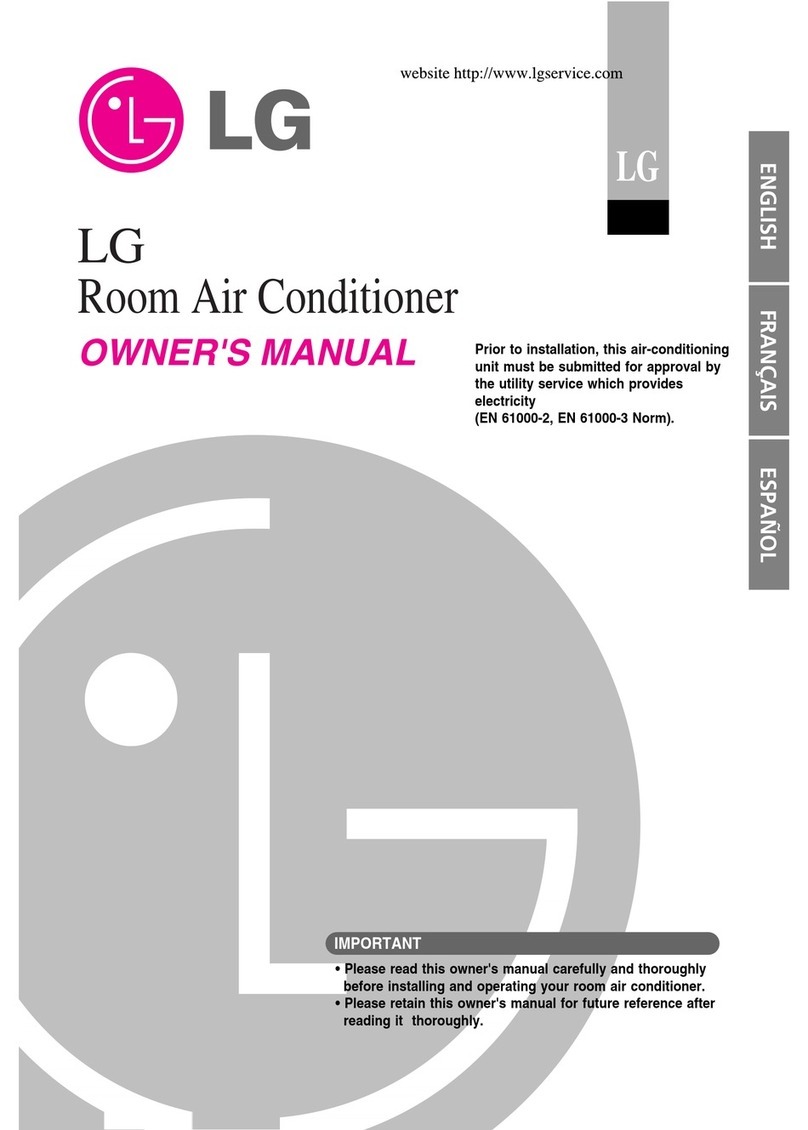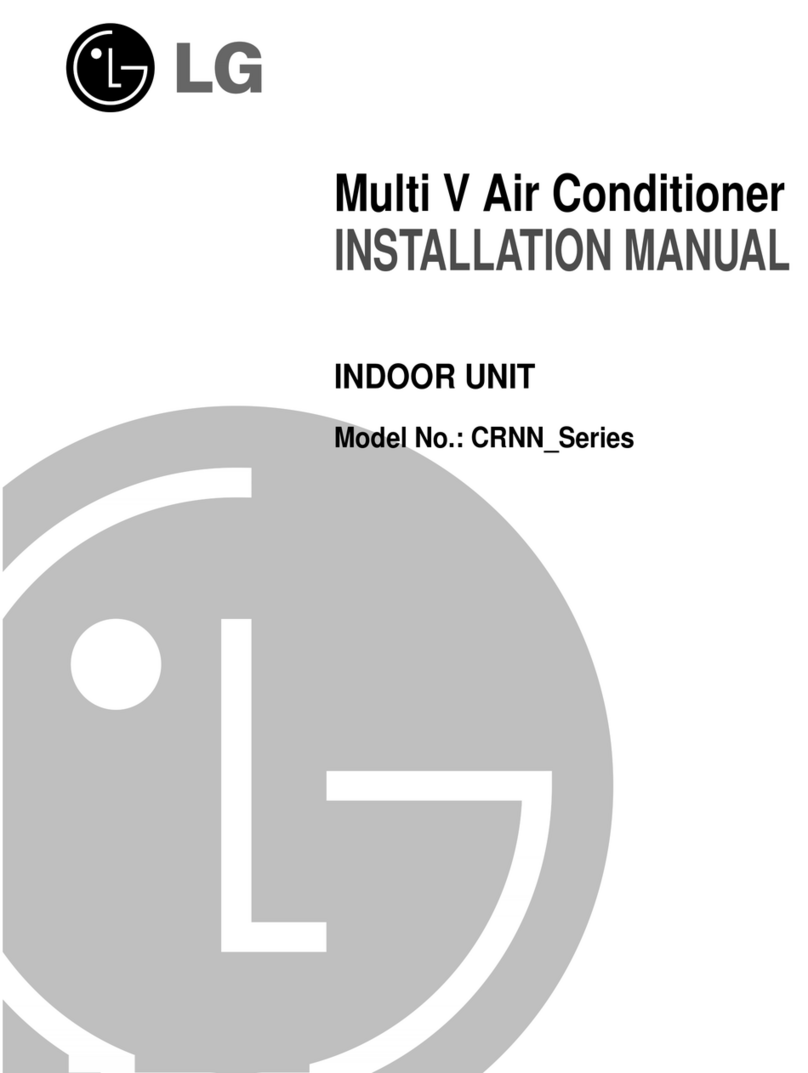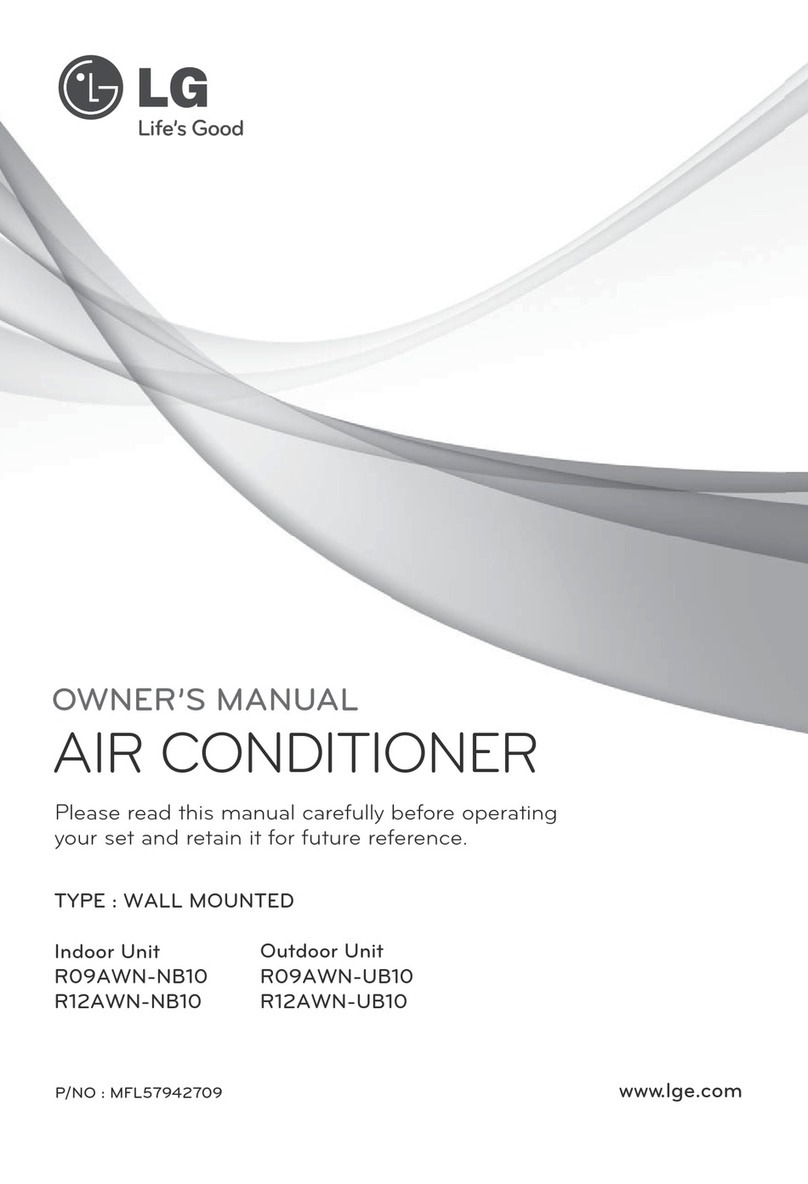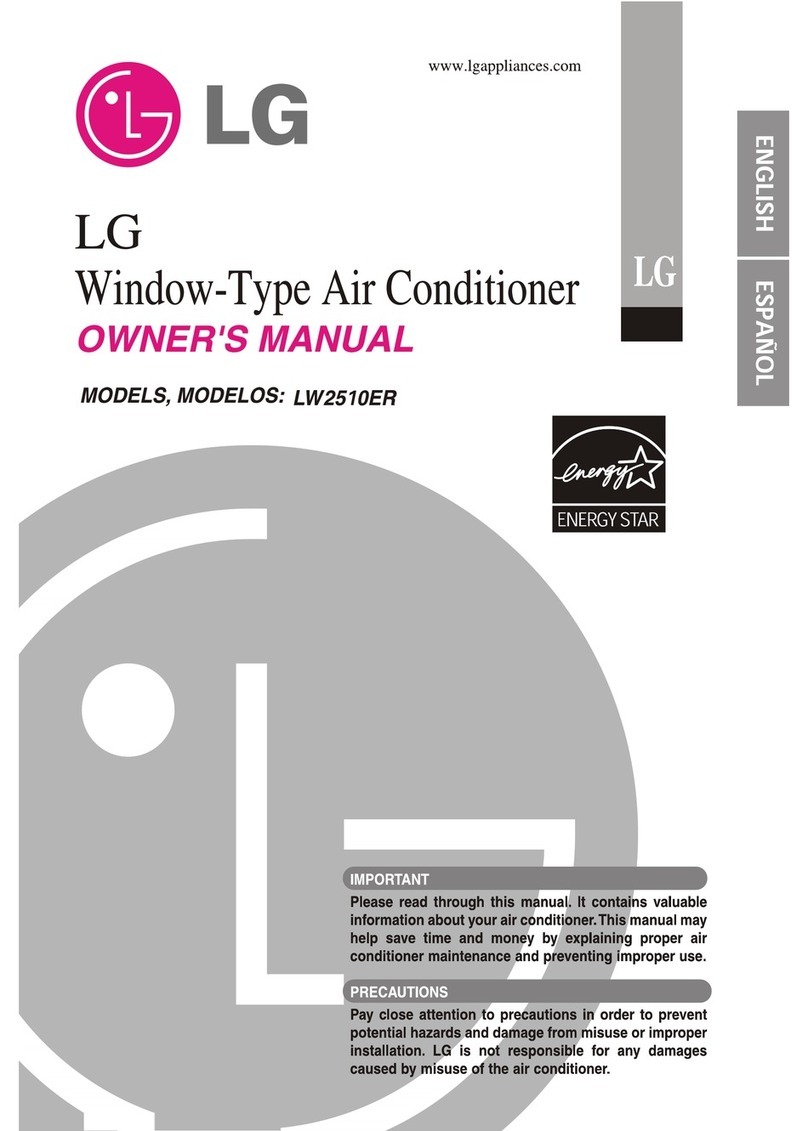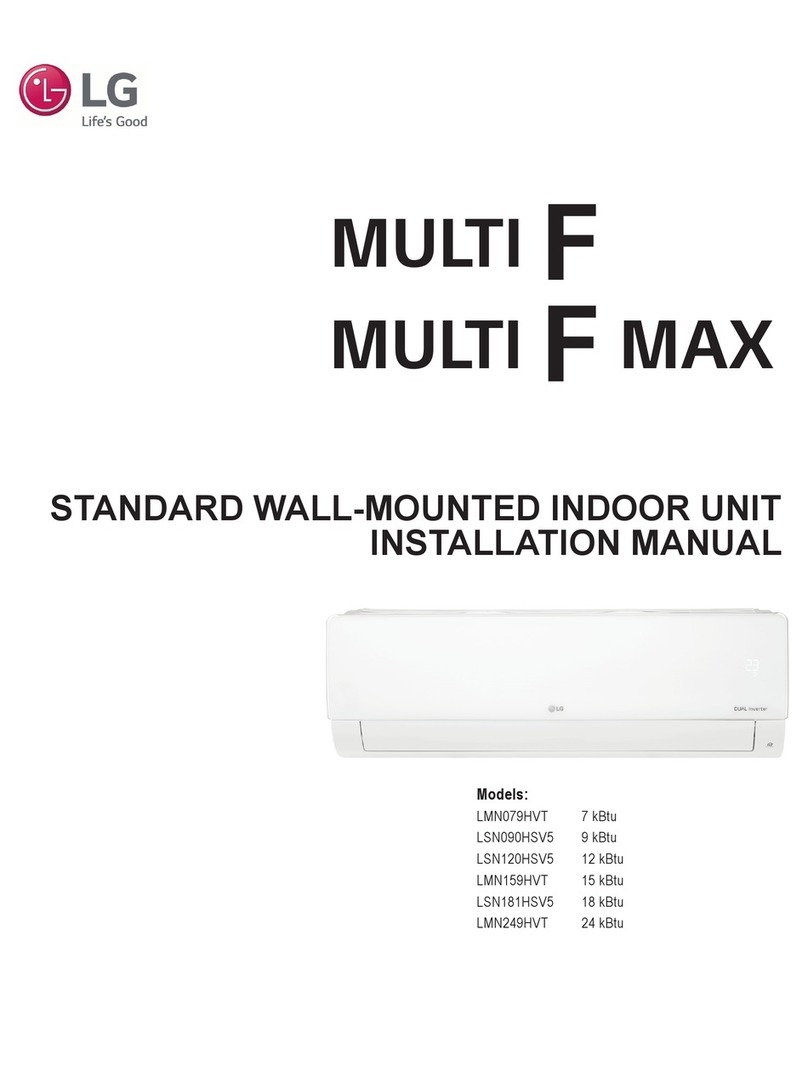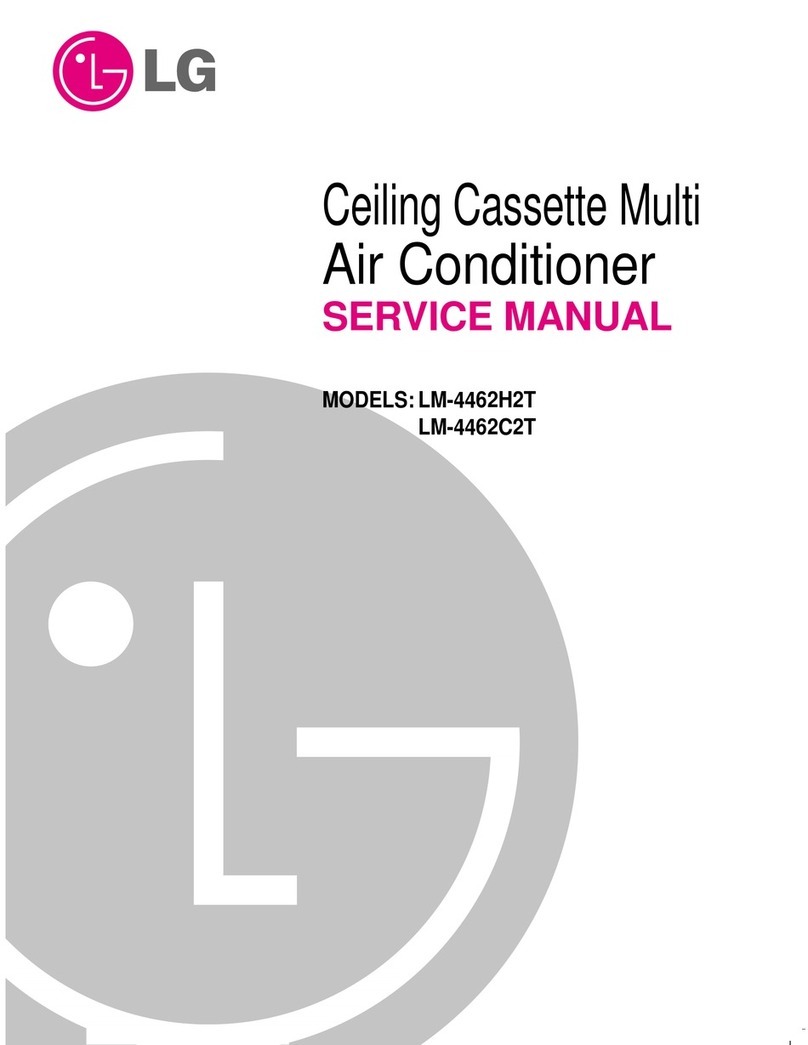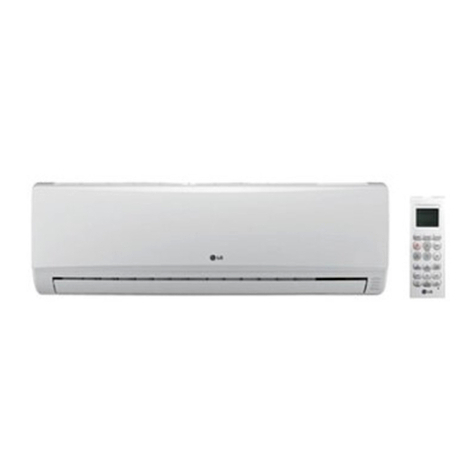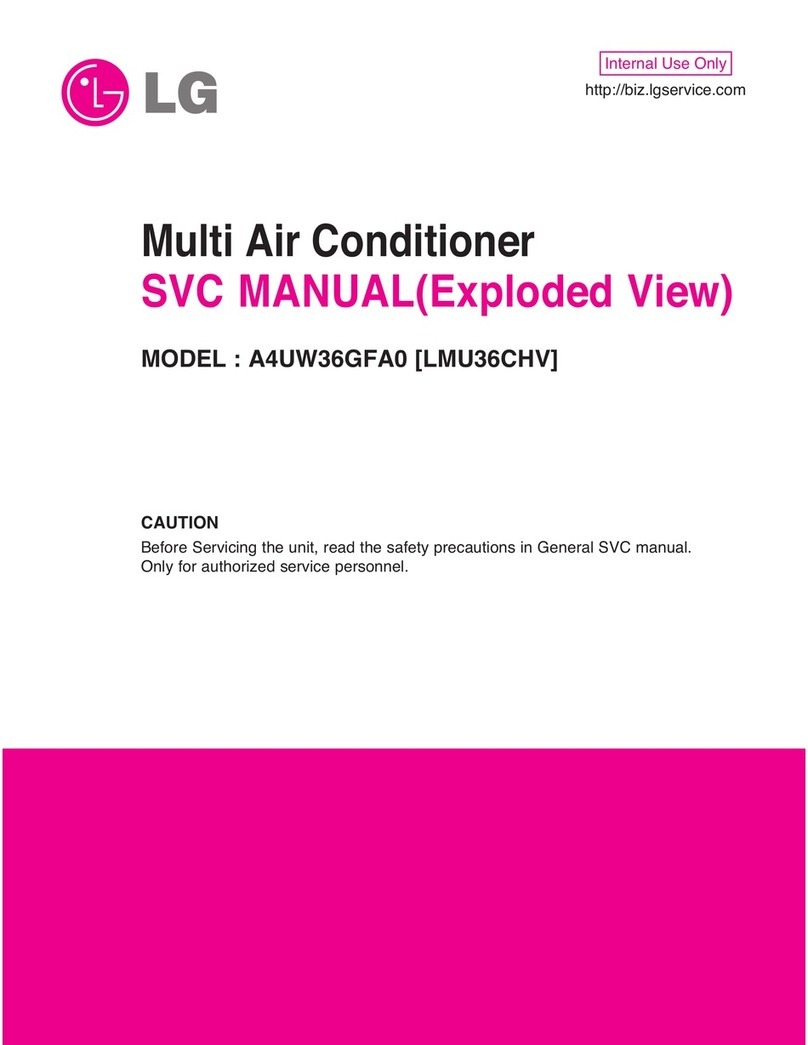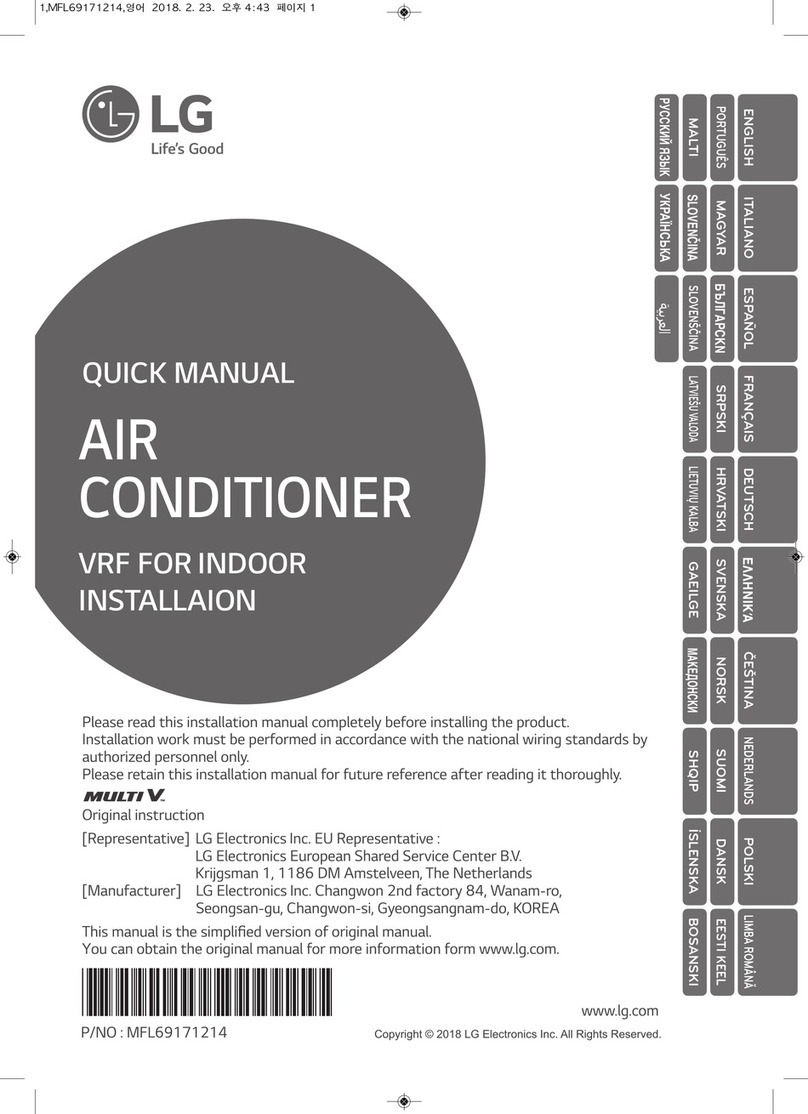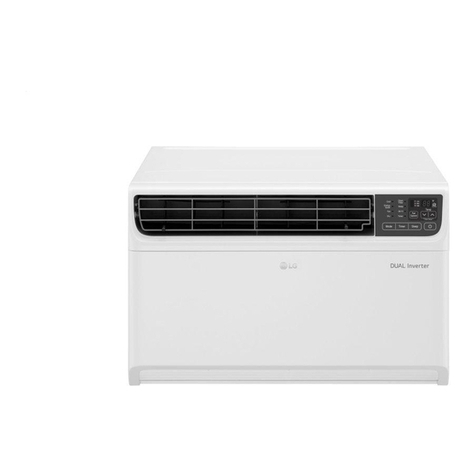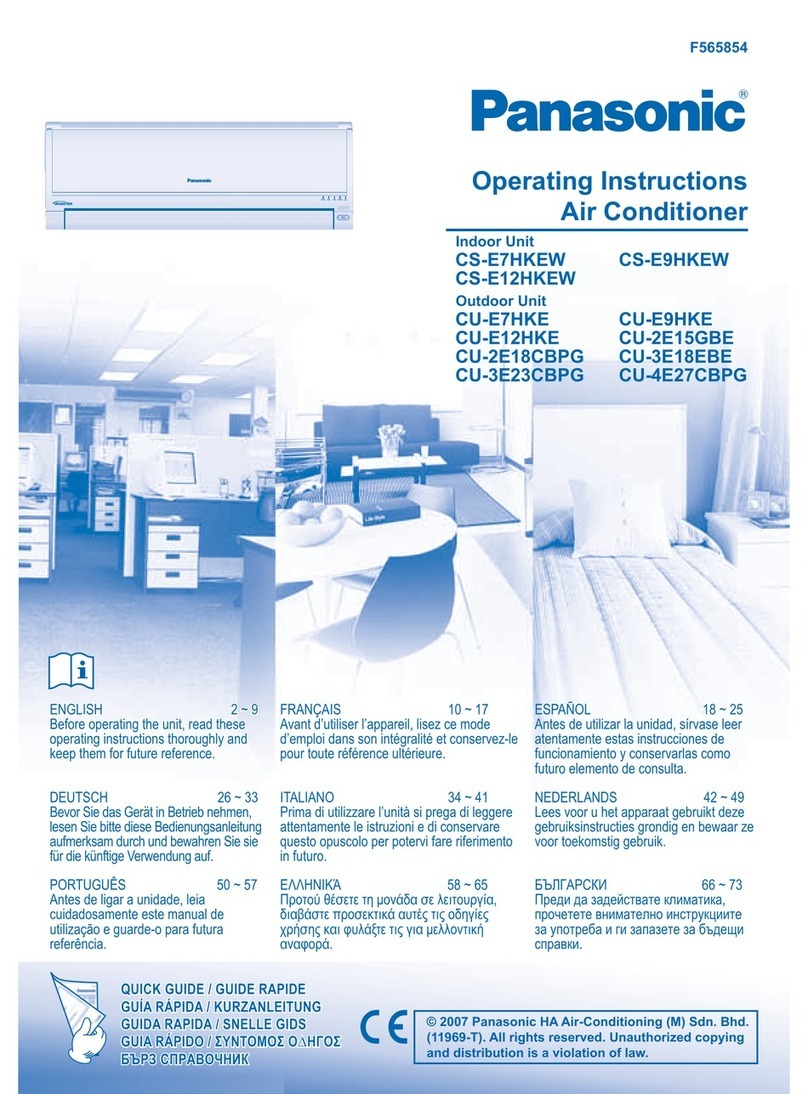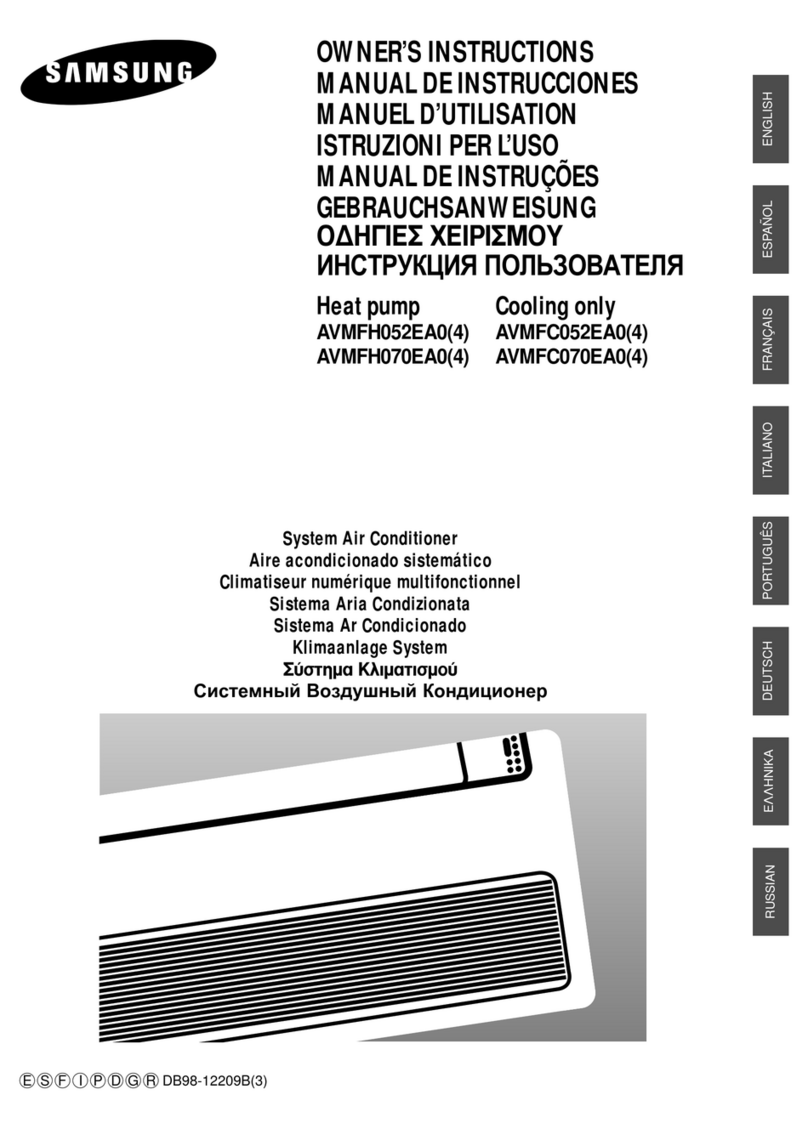
8
MULTI V S System Installation Manual
Due to our policy of continuous product innovation, some specifications may change without notification.
©LG Electronics U.S.A., Inc., Englewood Cliffs, NJ. All rights reserved. “LG” is a registered trademark of LG Corp.
Model Numbers 3.0 Ton 4.0 Ton 4.4 Ton
ARUN038GSS4 ARUN048GSS4 ARUN053GSS4
Cooling Performance
1RPLQDO&RROLQJ&DSDFLW\%WXK139,500 50,000 55,500
5DWHG&RROLQJ&DSDFLW\%WXK238,000 48,000 53,000
Heating Performance
1RPLQDO+HDWLQJ&DSDFLW\%WXK144,000 56,500 61,500
5DWHG+HDWLQJ&DSDFLW\%WXK242,000 54,000 59,000
Operating Range
&RROLQJ)'% 23 - 122 23 - 122 23 - 122
+HDWLQJ):% -4 - 61 -4 - 61 -4 - 61
Compressor
Inverter Quantity DC Inverter Starting DC Inverter Starting DC Inverter Starting
2LO7\SH PVE / FVC68D PVE / FVC68D PVE / FVC68D
Fan (Side Discharge)
Type Axial Flow Fan Axial Flow Fan Axial Flow Fan
0RWRU2XWSXWN:[4W\ 0.124 x 2 0.124 x 2 0.124 x 2
0RWRU'ULYH Brushless Digitally Controlled / Direct
2SHUDWLQJ5DQJH530 Cooling 0 - 850 0 - 850 0 - 850
Heating 0 - 850 0 - 850 0 - 850
0D[LPXP$LU9ROXPH&)0 3,885 3,885 3,885
Unit Data
Refrigerant Type R410A R410A R410A
5HIULJHUDQW&RQWURO/RFDWLRQ EEV / Indoor Unit EEV / Indoor Unit EEV / Indoor Unit
0D[1XPEHU,QGRRU8QLWV6\VWHP3689
6RXQG3UHVVXUHG%$450 51 52
1HW8QLW:HLJKWOEV 207 207 207
6KLSSLQJ:HLJKWOEV 218 218 218
Communication Cables5,6 2 x 18 2 x 18 2 x 18
Heat Exchanger
0DWHULDODQG)LQ&RDWLQJ Copper Tube /Aluminum Fin and GoldFin™ / Hydrophilic
5RZV)LQVSHULQFK 2 / 14 2 / 14 2 / 14
Piping7
/LTXLG/LQH&RQQHFWLRQLQ2' 3/8 Braze 3/8 Braze 3/8 Braze
9DSRU/LQH&RQQHFWLRQLQ2' 5/8 Braze 5/8 Braze 3/4 Braze
)DFWRU\&KDUJHOEVRI5$ 6.6 6.6 6.6
Table 1: 9+HDW3XPS8QLW6SHFL¿FDWLRQV
1Nominal capacity applied with non-ducted indoor units, and is rated 0 ft. above sea level
with 25 ft. of refrigerant line per indoor unit and a 0 ft. level difference between outdoor and
indoor units.All capacities are net with a Combination Ratio between 95–105%.
Nominal cooling capacity rating obtained with air entering the indoor unit at 80ºF dry bulb
(DB) and 67ºF wet bulb (WB) and outdoor ambient conditions of 95ºF dry bulb (DB) and
75ºF wet bulb (WB).
Nominal heating capacity rating obtained with air entering the indoor unit at 70ºF dry bulb
(DB) and 59ºF wet bulb (WB) and outdoor ambient conditions of 47ºF dry bulb (DB) and
43ºF wet bulb (WB).
25DWHGFDSDFLW\LVFHUWL¿HGXQGHU$+5,6WDQGDUG6HHZZZDKULQHWRUJIRULQIRUPDWLRQ
3The System Combination Ratio must be between 50–130%.
4Sound pressure levels are tested in an anechoic chamber under ISO Standard 3745.
5All communication cable to be minimum 18AWG, 2-conductor, stranded, shielded or
unshielded (if shielded, must be grounded to chassis at ODU only), and must comply with
applicable local and national codes.
63RZHUZLULQJFDEOHLV¿HOGSURYLGHGDQGPXVWFRPSO\ZLWKWKHDSSOLFDEOHORFDODQGQDWLRQ-
al codes. See below for detailed electrical data.
7Refer to the Refrigerant Piping section of this manual for correct line sizing. Contractor
must use LG manufactured Y-Branch and Header Kits only. Designer must verify refriger-
DQWSLSLQJGHVLJQFRQ¿JXUDWLRQXVLQJ/*¶VFRPSXWHUL]HGUHIULJHUDQWSLSLQJ/$760XOWL9
software to validate the pipe design.
Table 2: 208-230V Heat Pump Unit Electrical Data.
Nominal Tons Unit Model No. Compressor Motor &RQGHQVHU)DQ0RWRU MCA MOCP
Quantity MotorAmps )DQ4W\ Amps
5/$(D )/$(D
3.0 ARUN038GSS4 1 19.5 2 1.0 25 40
4.0 ARUN048GSS4 1 23.1 2 1.0 30 50
4.4 ARUN053GSS4 1 25.2 2 1.0 33 50
0XOWL962XWGRRU8QLW6SHFL¿FDWLRQV(OHFWULFDO'DWD
GENERAL DATA
